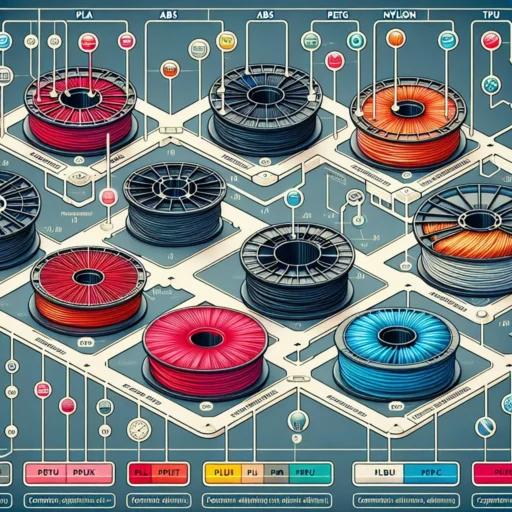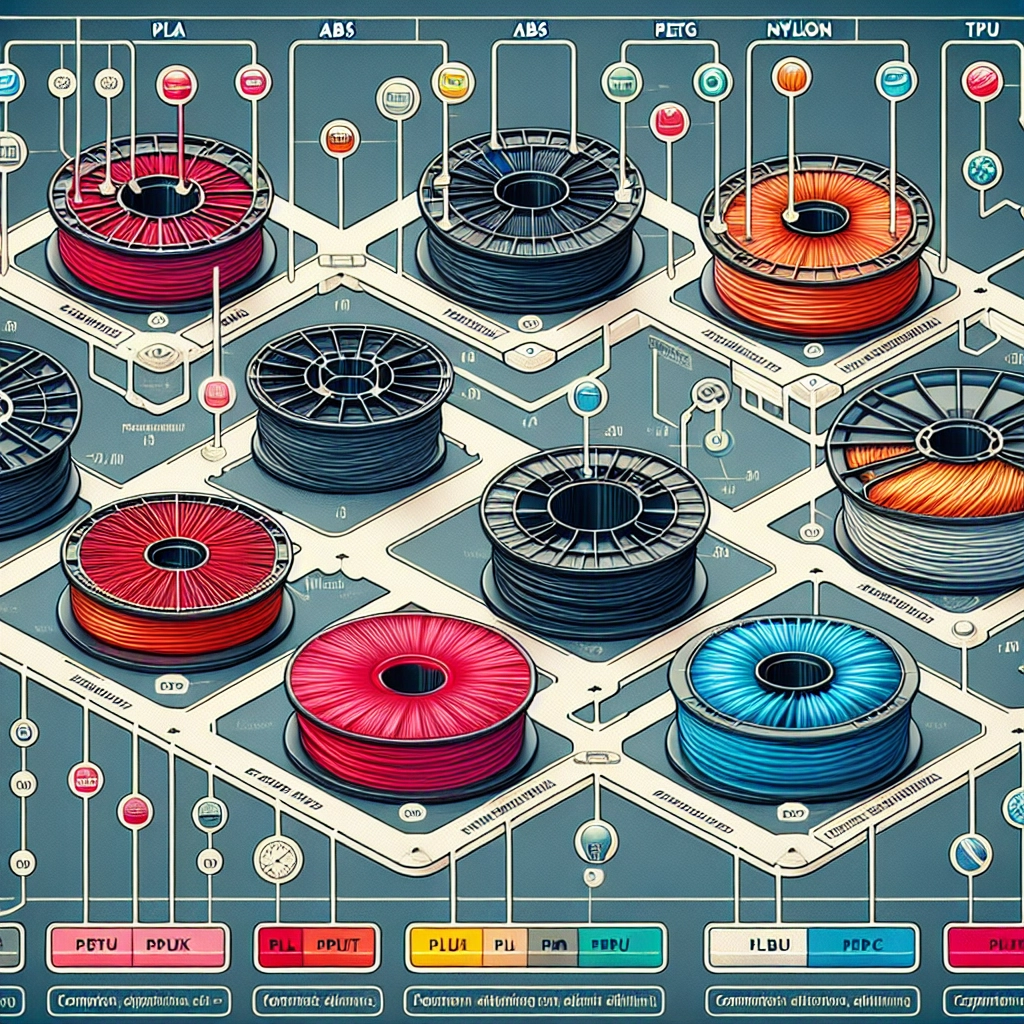Choosing the Right Filament: A Comparison of Popular Options
If you’re diving into the world of 3D printing, one of the most important decisions you’ll face is choosing the right filament. There’s a whole universe of materials out there, each offering unique properties that can impact your projects. With so many options, it’s essential to understand the differences and decide which filament is best suited for your needs. Let’s explore some of the most popular types of 3D printing filaments available today!
PLA (Polylactic Acid)
PLA is one of the most common filaments used in 3D printing, especially for beginners. It’s made from renewable resources, like cornstarch or sugarcane, making it biodegradable—a big plus for eco-conscious makers. PLA is known for its ease of use; it adheres well to the print bed and produces minimal warping, which is a huge relief if you’re just starting out.
However, while PLA is great for most general-purpose prints, it does have its limitations. It can be brittle, making it less ideal for functional parts that may undergo stress. Additionally, PLA isn’t particularly heat-resistant, so items printed with this material can soften if left in a hot car or near other heat sources.
ABS (Acrylonitrile Butadiene Styrene)
On the other side of the spectrum, ABS is a classic choice widely used in many industrial applications. It’s strong, durable, and can handle higher temperatures than PLA. If you’re printing functional parts, toys, or anything that needs to withstand some wear and tear, ABS might be the way to go.
One major drawback, however, is that printing with ABS requires a heated bed to prevent warping, which can be a challenge for beginners. Plus, it has a tendency to emit unpleasant fumes during printing, so good ventilation is a must. But for those who have moved past the beginner stage, ABS can offer a robust option for creating durable objects.
PETG (Polyethylene Terephthalate Glycol)
Now, let’s shine a light on PETG, a filament that has been gaining popularity in recent years. Combining the best features of PLA and ABS, PETG offers good strength and flexibility. It’s also less likely to warp compared to ABS, making it a great choice if you want something a bit more durable but still easy to print.
PETG is resistant to impact and moisture, which means it’s suitable for both indoor and outdoor projects. It’s also food-safe when printed with the right precautions, which can be a bonus if you’re thinking of making containers or kitchen utensils. However, it can be stringy, so you may need to fine-tune your printer settings to get the best results.
TPU (Thermoplastic Polyurethane)
For those interested in flexibility, TPU is your go-to filament. This material is known for its rubber-like properties, making it perfect for printing flexible objects like phone cases, wearable devices, or any project where you need stretchability. TPU is resilient and resistant to abrasion, which makes it a solid choice for items that need to withstand wear.
However, printing with TPU can be a bit of a dance. It requires precise settings and often has challenges with feeding through the printer. If you’re up for the challenge and need something flexible, though, it can be incredibly rewarding.
Nylon
Moving on to Nylon, this material is famed for its remarkable strength and durability. It’s often used for mechanical parts or items that undergo a lot of stress. Nylon is also highly resistant to abrasion, moisture, and temperature, making it ideal for outdoor applications.
On the flip side, Nylon can be quite tricky to work with. It tends to absorb moisture from the air, which can affect print quality, and it usually requires a heated bed and a well-calibrated printer to avoid warping. For experienced users, though, the results can be spectacular.
Making Your Choice
With all these options, how do you choose the right filament for your project? Start by considering what you’re planning to print. If you need something decorative and not overly complicated, PLA is your best bet. For functional parts, look into ABS or PETG. For flexible items, TPU is a champion, while Nylon is your friend for high-stress components.
Ultimately, experimenting with different filaments is part of the fun of 3D printing. Each type brings its own set of characteristics and challenges, and through trial and error, you’ll find what works best for your style and projects. So roll up your sleeves, fire up that printer, and get creative! Who knows what amazing things you’ll make.






